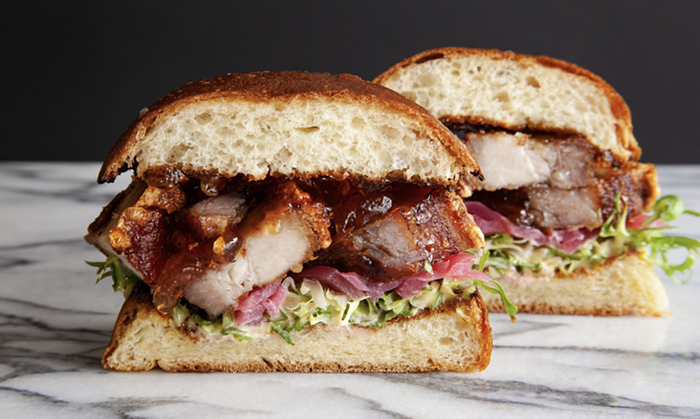The Western palate is trained to place foods into one of two extremely broad columns: the sweet or the salty. Rarely is the gray area between those two extremes explored or discussed. But there is salt in your chocolate, and there's sugar in your steak sauce.
This is why the buzzword in foodie neurochemist circles (granted, not extremely large circles) for the past four or five years has been "umami." Umami is the "fifth taste," joining the basic four of sweet, salty, bitter, and sour. When you join sweet (the –oses: glucose, fructose, sucrose, etc.) and salty (sodium, etc.) at the molecular level, you get umami, translated as "savory," and best demonstrated in molecules like monosodium glutamate (MSG), isolated and synthesized early in the 20th century in Japan as the secret to the flavor of seaweed. Umami is different from other combinations of sweet and salty in that it fires up its own neurons in the brain when the tongue experiences it. The taste of umami is tough to describe—most attempts I've read rely on meaningless words like "delicious" and "rich" and "textured." Test subjects exposed to foods with umami ingredients choose them as "better" in overwhelming percentages. Neurochemists want to know why, and foodies want to know how.
I think of all this umami research in light of The Lemongrass's opening volley on both of two recent visits—the lovely, lively, tropicalicious mango salad ($7.25). I defy you to go to this lovely little Vietnamese restaurant and start with anything else. If you squint just barely, the plate of sliced and fried tofu, draped with slices of fresh mango and a julienne of bell peppers, is indistinguishable from a heaping plate of cheese fries. It's uncanny, and four different diners noticed the resemblance right off the bat. It's a great little unintentional visual pun. The mango salad starts the meal off with a bright blast of heat from the chili oil and red onion weaving its way through the stickiness of the mango's sweetness and the salty stability of the fried tofu. I love a meal that begins with this kind of bright heat, waking and opening the palate up for the meal to come. Perhaps most importantly, the mango salad is as much a sweet dish as a savory one. Its heat is as much a part of its character as its sweet; its salts define it as much as its sugars. It's a fascinating dish. Umamilicious.
I have written often about the harmonies that ingredients can create within a dish, the way flavors can relate to one another as notes of a chord. Pineapple and red onion, for example, come together in a half dozen dishes on this menu, offering a high sharp note contrasting with a warm, enveloping sweetness. But what was amazing to me about my meals at The Lemongrass was how the dishes combined across the table to create chords. The grilled rich, smoky, lemongrass beef ($9.50) is offset perfectly by the bright crispness of the mixed vegetables ($8.25). Each dish was a harmonizing note; the meal was the chord. And everything we sampled from the moderately priced menu was delicious, from the curries to the umami-laced tamarind sour soup ($7.95 for a small, which was more than enough to feed two people).
Word has it that The Lemongrass is the Vietnamese restaurant of choice among Seattle's Vietnamese community. It's obviously got a devout following, both white and Asian, and packs out both for the lunch hour and for dinner. Yet even at their busiest, the staff takes fantastic care of diners (even first-timers such as my guest and I). We were impressed on one recent visit when we asked about a completely unidentifiable ingredient in the soup. It was a slice of some sort of vegetable, honeycombed with large open cells—crisp like a cucumber and sweet like a berry. When the word for the ingredient in Vietnamese meant nothing to me, and the kitchen couldn't come up with an English translation, they walked the raw ingredient out to the dining room to show it off and explain its use. Absolutely top-notch.


















